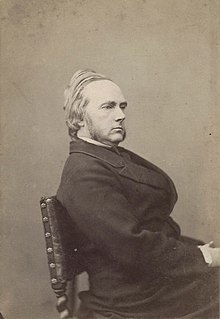The Duke of Argyll | |
|---|---|
 Portrait by Herbert Rose Barraud, c. 1870-75 | |
| Lord Privy Seal | |
| In office 4 January 1853 – 7 December 1855 | |
| Monarch | Victoria |
| Prime Minister | The Earl of Aberdeen The Viscount Palmerston |
| Preceded by | The Marquess of Salisbury |
| Succeeded by | The Earl of Harrowby |
| In office 18 June 1859 – 26 June 1866 | |
| Monarch | Victoria |
| Prime Minister | The Viscount Palmerston The Earl Russell |
| Preceded by | The Earl of Hardwicke |
| Succeeded by | The Earl of Malmesbury |
| In office 28 April 1880 – 2 May 1881 | |
| Monarch | Victoria |
| Prime Minister | William Ewart Gladstone |
| Preceded by | The Duke of Northumberland |
| Succeeded by | The Lord Carlingford |
| Postmaster General | |
| In office 30 November 1855 – 21 February 1858 | |
| Monarch | Victoria |
| Prime Minister | The Viscount Palmerston |
| Preceded by | The Viscount Canning |
| Succeeded by | The Lord Colchester |
| Secretary of State for India | |
| In office 9 December 1868 – 17 February 1874 | |
| Monarch | Victoria |
| Prime Minister | William Ewart Gladstone |
| Preceded by | Sir Stafford Northcote, Bt |
| Succeeded by | The Marquess of Salisbury |
| Personal details | |
| Born | 30 April 1823 Ardencaple Castle, Dunbartonshire, Scotland |
| Died | 24 April 1900 (aged 76) Inveraray Castle, Argyll, Scotland |
| Nationality | British |
| Political party | Liberal |
| Spouses | Amelia Claughton
(m. 1881; died 1894)Ina McNeill (m. 1895) |
| Children | 12, including John, Colin, Victoria and Frances |
| Parents |
|
| Signature |  |
George John Douglas Campbell, 8th and 1st Duke of Argyll KG, KT, PC, FRS, FRSE (30 April 1823 – 24 April 1900; styled Marquess of Lorne until 1847), was a Scottish polymath and Liberal statesman. He made a significant geological discovery in the 1850s when his tenant found fossilized leaves embedded among basalt lava on the Island of Mull. He also helped to popularize ornithology and was one of the first to give a detailed account of the principles of bird flight in the hopes of advancing artificial aerial navigation (i.e. flying machines). His literary output was extensive writing on topics varying from science and theology to economy and politics. In addition to this, he served prominently in the administrations of Lord Aberdeen, Lord Palmerston, John Russell and William Gladstone.